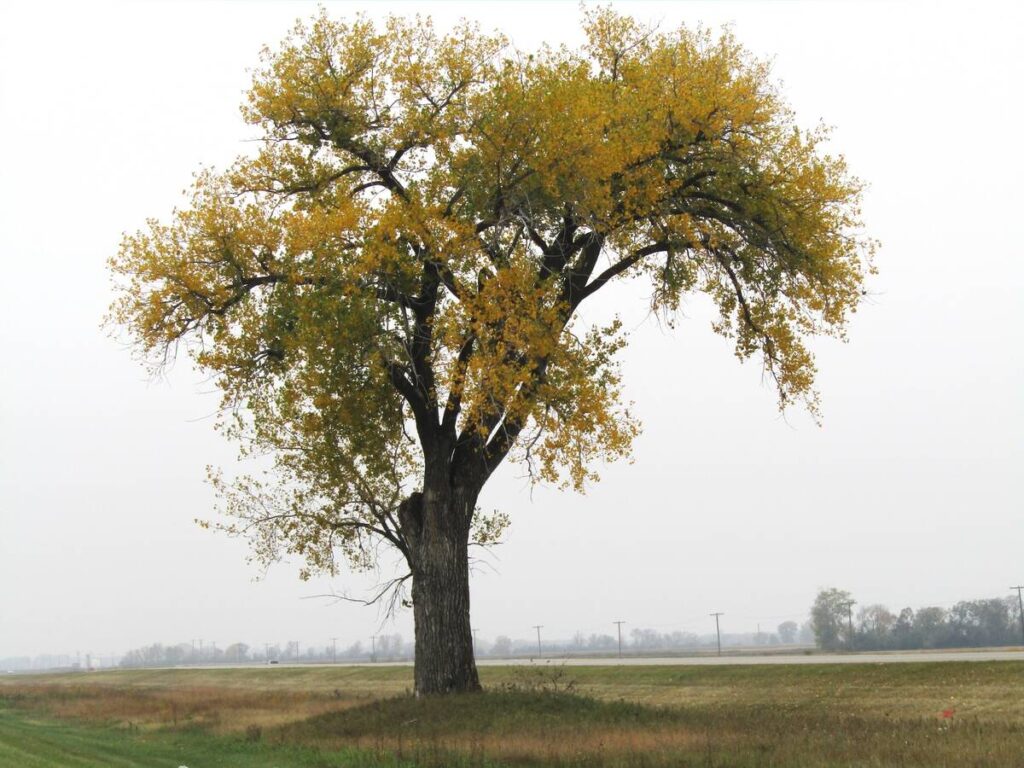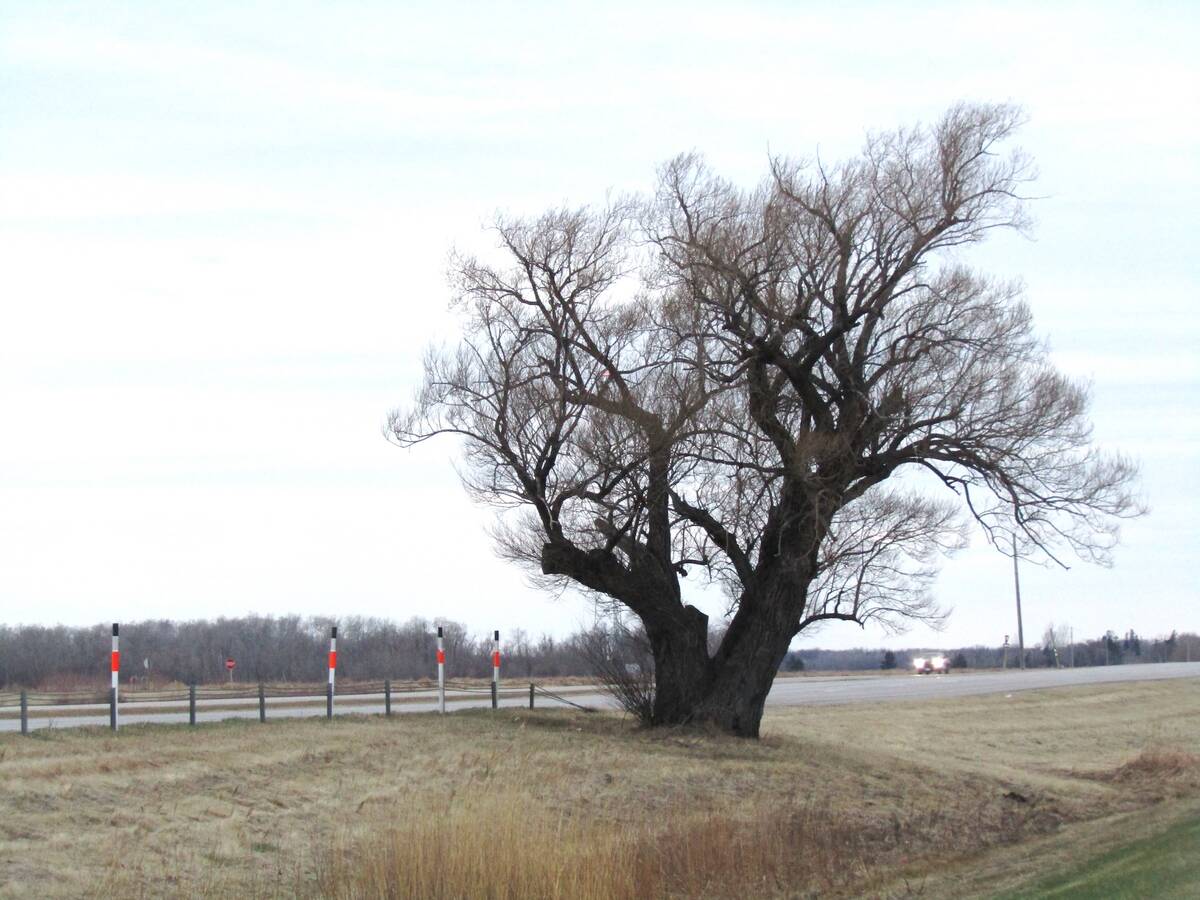Will the real Halfway Tree please stand up?

Glacier FarmMedia – There aren’t many trees with their own fan club, but the Halfway Tree along the Trans-Canada Highway does.
This tree, an eastern cottonwood, stands about 85 feet tall and is more than 100 years old. It’s a well recognized landmark for Manitoba motorists, marking the approximate halfway mark on the trek between Brandon and Winnipeg.
The tree juts up from the horizon between MacGregor and Portage la Prairie, in the Rural Municipality of North Norfolk. It is recognized by Google Maps and has been the subject of blog posts and news headlines.
Read Also


Open Farm Days in Saskatchewan looks for farms
Farmers, agri-tourism operators, food producers, retailers and farmers markets in Saskatchewan have until the end of May to sign up for Open Farm Days in the province.
Its digital and social media presence has racked up followers, who contribute pictures and comments. According to Facebook, the Halfway Tree Fan Club has 5,400 members, with several new contributions to the page added every week. Travellers often stop for a photo, and some leave trinkets or mementos in the branches or at the base of the tree. There’s even a song written about it.
There is an, admittedly unverified, local story regarding the origin of the cottonwood tree.
By that account, the tree was planted by a young man named Fred Archer, who had immigrated from England as a 16-year-old orphan. He settled in the Bagot area and later married a woman named Catherine Pearce. But in 1919, Catherine died following the birth of their third child, who also died after three months.
The grieving widower, the story goes, planted two trees in their honour.
One was damaged when the highway was being constructed, leaving the present Halfway Tree.
Archer’s grandchildren say the story is true, and census records show that “Archer, Catherine” and two sons did live in Rossendale (south of Bagot) in 1916, and that Fred and two sons were still there in 1921. Archer’s descendants live in Manitoba and British Columbia.
Today, the tree still stands proudly, although one of the main trunks has died back.
The cottonwood isn’t the only contender for its title.
Some Manitoba residents insist that a different tree should be considered the halfway tree between Manitoba’s capital and the Wheat City. This crack willow is located on the north side of the highway a few kilometres farther east.


This one does not have a fan club or website. Still, it has been written up in the Manitoba Gardener magazine, in which it is called “the Halfway Tree,” and it was nominated as a Heritage Tree of Manitoba in 1985.
The cottonwood is not actually registered as a heritage tree, but both trees are shown with a photo on a page of the Manitoba Historical Society.
This willow was planted by landowner Walter Smith in 1872, and so is considerably older than the cottonwood. The willow was nearly cut down in the 1950s because Manitoba Hydro felt it might damage power lines, but public protest kept it standing.
The tree faced further concerns when the highway was twinned, leaving the willow very close to the road. After further protest, the tree was, again allowed to remain. A long, steel guardrail was added for vehicle protection.
Despite that, in 2000 a transport truck ran into the tree, causing considerable damage. Supporters of the tree managed to persuade the provincial highways department to hire an arborist to remove the damaged wood. A few years later, lightning broke off some branches and bark. Again, the tree survived.
It’s not clear how long the two trees will survive, since both show some decline. However, nearby residents seek to maintain both.
I suspect that Winnipeg residents may opt for the north-side tree, since they encounter it first as they travel west, while travellers from Brandon driving east use the term for the south-side tree for the same reason.
Because of its height, the cottonwood on the south side is a little more impressive. With its own website and fan club, I think it wins in popularity.
Source: producer.com


